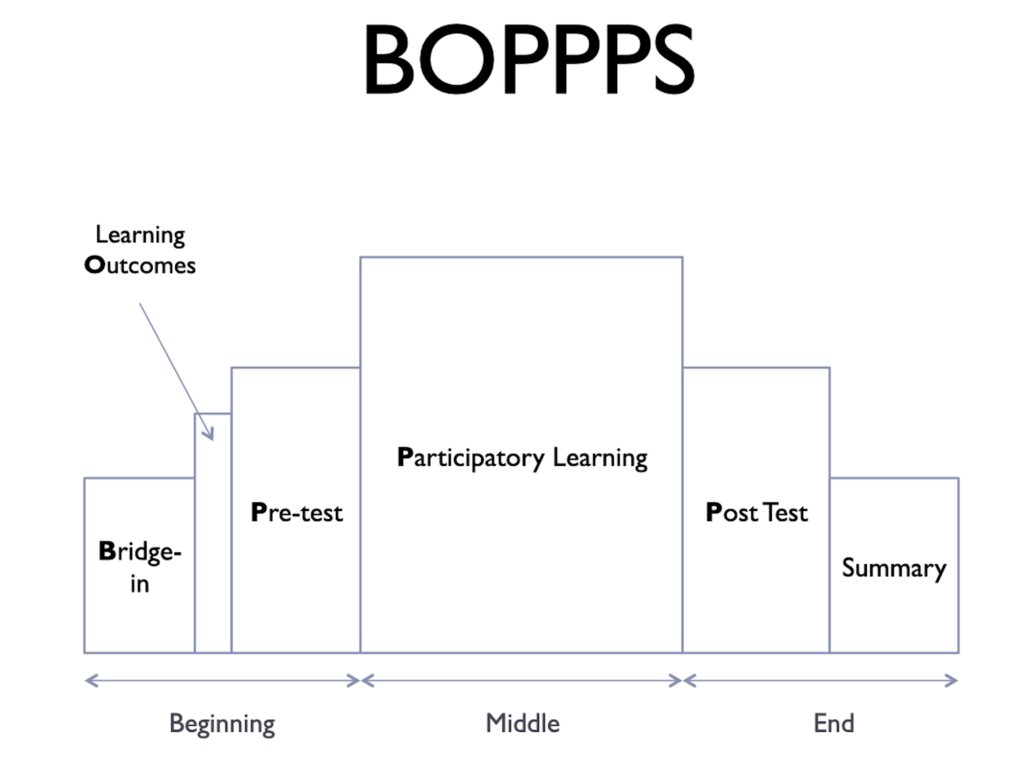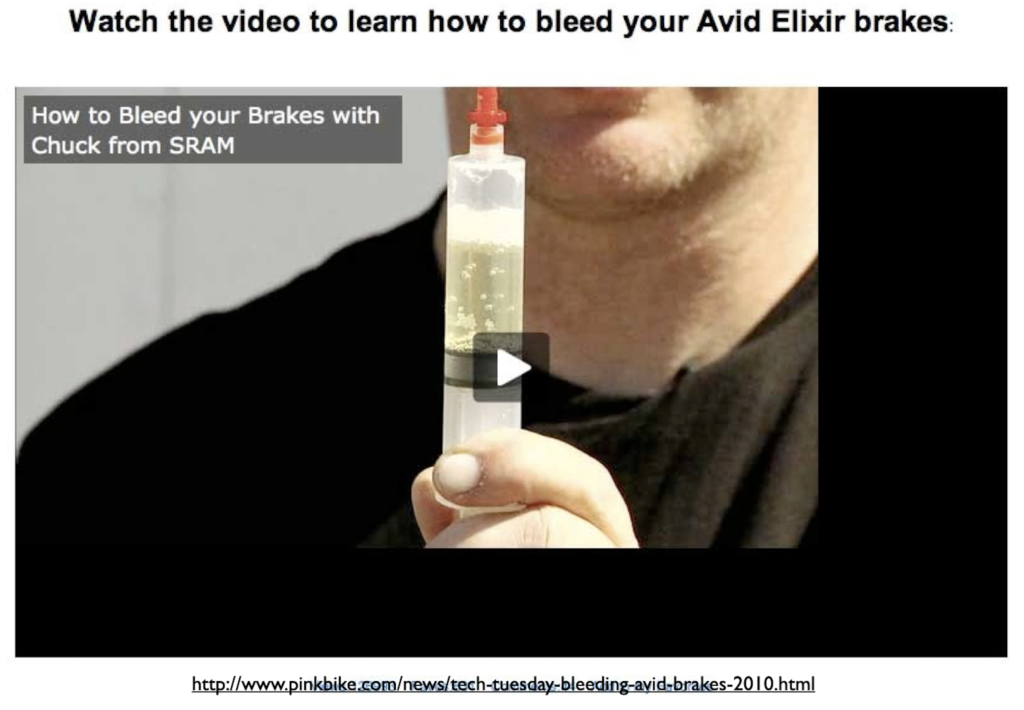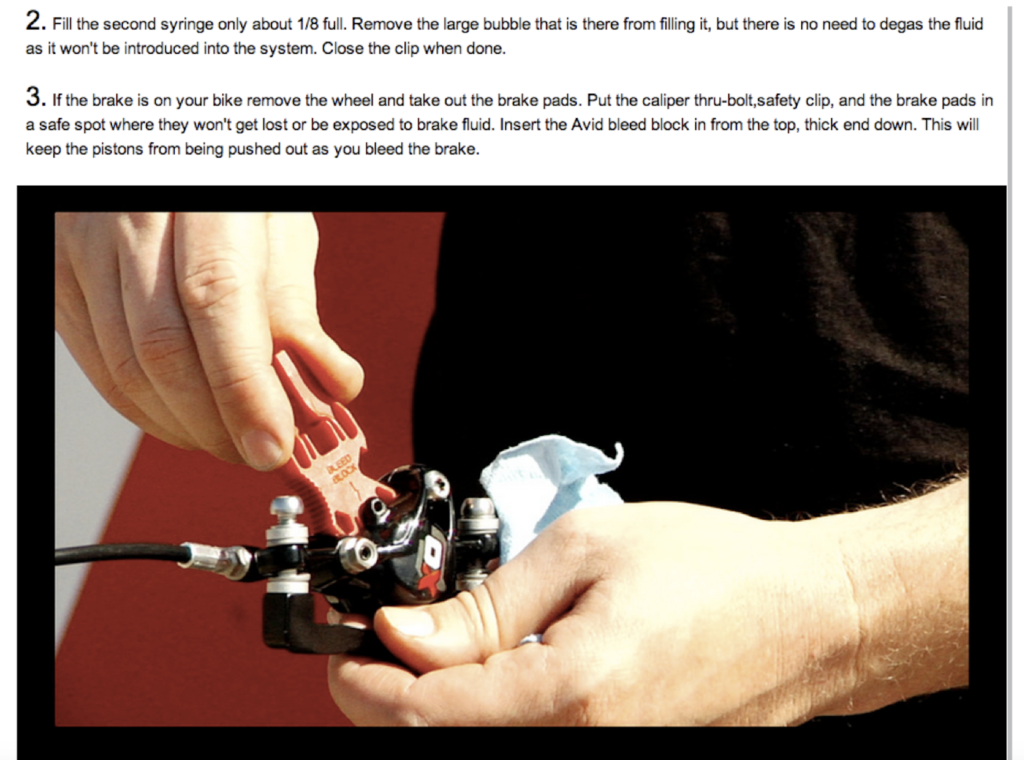If you are using your synchronous communication time with your students to deliver content please STOP. There is a better way to use this valuable time. When you meet with your learners online in real-time, which is what synchronous communication is, you should be using this time to build your learning community NOT deliver content. Yes, you will be sharing information but you can do so in a positive way that will be engaging and will foster collaboration. Because of amazing technologies like Zoom, Skype, WebEx, Collaborate, Blue Jeans so so many more, you can get close to the level of engagement that you can have in your face2face sessions. At least you can if you use something like the BOPPPS model.
Rather than try to explain the BOPPPS model I will show you what it is and how it works with an actual recording of a Synchronous Collaboration session followed by a breakdown of how I used BOPPPS model components to keep my session participants engaged.
Power Video Synchronous Collaboration Session 1
Power Video Synchronous Collaboration Session 2
In addition to having a slightly larger group, in this second session also I sorted out the video issue I had in the first session. But with the video sorted out the Dave Hax How to Fold a Shirt is copyrighted to I had to trim out that content. The full video can be viewed below.
How I used the BOPPPS Model in the Power of Video Session
BOPPPS Model Details
Bridge-in (B)
- The bridge-in is partly for capturing a learner’s attention.
- Lao Tzu said, “You can no more teach without a willing learner than a merchant can sell without a willing buyer.”
- Aside from simply gaining attention, a bridge-in should ideally get students to want to learn.
Bridge-in (B) Techniques
- Tell a personal story
- Bring in a relevant newspaper article, website, video, device…
- State an interesting statistic
- Create doubt
- Create curiosity
- State a current problem
In the session main keynote slide the Can a Picture Say More than a Thousand Words? image and then the folding the shirt were all part of the Bridge In for my session. I used images, story and a problem followed up by a video to create an effective and powerful bridge. Just consider how you felt when you watch this folding the shirt video.
Learning Outcome (O)
It is always important to state or paraphrase the learning outcome – Use new media resources like video, audio, and images to enhance the learning environment.
Pre-Assessment (P)
- This step is intended to find out what your students already know. Why do this?
- What can you do with students who know a lot of the content?
- The questions you ask can be the same as you would do for the bridge-in. If so, what can you do?
- Use open-ended rather than close-ended questions in this step. Why?
- Brainstorming can also work.
I asked the following question as part of my Pre-Assessment:
What is the most popular search engine for North American’s 18 years and younger?
The answer was surprising for most participants because most people do not think of Youtube as a search engine and yet that is how it is used by most people. The answer to:
What is the second most popular search engine in North American?
should have been less of a surprise but most participants still thought about traditional search engines.
The key with the Pre-Assessment stage of BOPPPS to get a sense of where your audience is at and just how far you need to take them.
Participatory (P)
Active or participatory learning leads to “deep” learning; learning that lasts.“Surface” learning tends not to last.
Personal interaction with the content leads to personal/deep meaning.
Interaction can be between you and students or between students.
What are some activities you can do within a lesson so that you do NOT have a traditional “talk-only” lecture?
The participatory section started with a discussion about how powerful combining video with graphics and text to create and effective:
A series of slides were presented that led to additional discussions which are key to the participatory process.
The focus on the Participatory section is to get to the outcome which is:
Using new media resources like video, audio, and images to enhance the learning environment.
To ensure that the outcome was realized a short Post-Assessment participation section is facilitated and used to ensure that the key elements of the outcome have been addressed.
Post-Assessment (P)
- Assess whether your students achieved the outcome.
- Be sure you assess the outcome at the right level.
- If you teach with media and/or real objects, you probably have to test with them.
- What are some ways you can conduct a post-assessment? For example, ask for“muddiest” point.
- Give time to answer your question(s).
One of the best ways to stimulate effective discussion is to ask open-ended questions like:
Your Thoughts…?
What are the advantages of using video & media?
How do video and media enhance learning?
Summary (S)
- The summary concludes or wraps up the learning experience.
- A powerful teaching moment that is often omitted.
- It can help students reflect on and integrate the learning – leading to deep learning.
- What things can you do in a summary?
Summary (S) Techniques
- Content review by you or learners
- Helpful phrase to ensure it is useful: “The key points to remember are …”
- Weak: Today you learned about …”
- Students write a one-minute paper
- Recognition for effort/achievement
- Application – how to use this later
- Link to a subsequent lesson
I trust you now see that the BOPPPS Model can work just as well online as it does face2face. Now you have the opportunity to use the BOPPPS model in your Synchronous Collaboration session. The same face2face lesson planning tool that is used throughout the PID Program. Lesson Plan Template
Additional Resources:
Queens University BOPPPS Model for Lesson Planning Infographic – https://www.queensu.ca/teachingandlearning/modules/active/18_boppps_model_for_lesson_planning.html
Looking forward to seeing your questions and comments on this implementation of the BOPPPS Model.





































Hi Dwayne Harapnuil,
Thank you for your insightful session on “Building Effective Synchronous Collaboration with BOPPPS.” Your approach emphasizes community-building over content delivery, which is both refreshing and impactful. The BOPPPS model provides a structured framework for interactive learning, guiding educators through key phases from Bridge-in to Summary. Your focus on participatory activities ensures active student engagement, enhancing the overall learning experience.
Question: In larger groups, how do you maintain engagement and ensure active participation for all students within each BOPPPS phase, given time constraints?
Your actionable approach to synchronous learning will be valuable for
educators aiming to create more dynamic online learning environments. Thank you for sharing these practical insights and techniques.
Best Regards
Sehaj
The key with larger groups is to break people into smaller break out groups/sessions online of use Think/Pair/Share or table talks in face-to-face setting.
I appreciated seeing an actual synchronous session and felt somewhat relieved how I have implemented a lot of pieces of the BOPPS model in instruction. I am guilty of sharing too much content ad I recognize that about myself. I am a sensorial learner – drawing from both visual and audio elements to learn effectively. I appreciate the open-ended questions – it was an interesting bridge from the folding shirt dilemma over to the queries about most popular search engines…I hope I can be this clever…sometimes I think I am but then I overthink and stress about missing ‘steps.’
I am glad to see that you are finding the resources on the site useful. I think we are all guilty of forcing too much content.
The BOPPPS model is quite an interesting way to provide structure to an online learning model. The use of different techniques throughout this structure provides many different ways to interact and engage learners.
I find that if you build in a structure and have a plan you can be open to even more learning opportunities. I like the beginning, middle and end perspective that the BOPPPS enables me to focus on.
Loves this. Looking forward to experimenting with various approaches in the stages.
Experimentation is the key to going deeper. Glad to hear you are looking forward to this.
Really appreciated how easy this forum was to read and follow along while learning something new! I also found it extremely helpful as I had watched the recording of The Power of Video and everything tied together.
Now to just think of an idea for myself…
Thanks for getting the thoughts flowing!
Sarah
Glad that you found this useful and it helped to “get the thoughts flowing”
I heeded your advice that gave us on our Tuesday meeting, to visit your Asynchronous Promo before starting our Synchronous Session. Very informative especially for myself, having no previous teaching education. Going through the BOPPPS model segment, I could envision each stage of my synchronous session planning.
Glad you found this useful. Envisioning the stages of your session is a wonderful way to start the planning process.
I really have to think twice about delivering content in a Synchronous Video. Needing to wrap my head around how to engage the participants to do their own brainstorming and engagement into their own learning outcome.
Interesting…
The challenge is to shift from delivering content to creating engagement. That doesn’t mean you don’t deliver some information, you just do so within the context of having your audience engage with the information. Using breakouts is just one of many ways that you can foster engagement.
Well organized session with interesting facts. YouTube being the number one search engine had a lot of folks surprised. I liked how you did a brief breakout room then pulled everyone back for more collaboration. The flow of you video was smooth even though Medina’s video wouldn’t play, you captured what was to be the most important part of the video which was movement in teaching/learning. I liked how you didn’t capture the break room conversations. How would I edit this part if I had a break out room for 5 mins and did not want to capture that portion in my recording?
Thanks for the encouragement. I ran the session again the other day and did manage to get both videos to work. The latest update in Zoom has sorted out some issues. When you are recording the session the breakout room does not get recorded so what I do is simply edit out these sections with my video editing tool. Ideally, if I just remembered to stop the recording at the start of the break out rooms and then start it again when the break out rooms come back I wouldn’t have to do any post-production editing. I don’t always remember to do this so I end up editing this out in post.